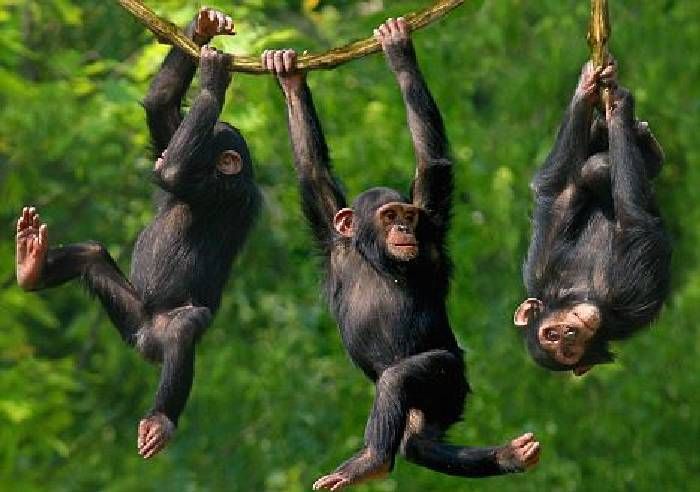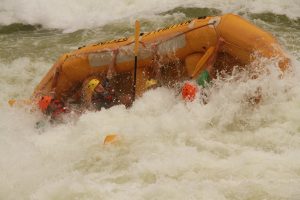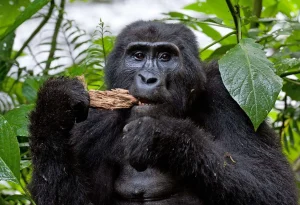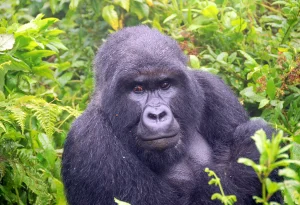Uganda, the “Pearl of Africa,” is renowned for its breathtaking landscapes and incredible biodiversity, and among its most captivating inhabitants are the intelligent and charismatic chimpanzees. Embarking on a chimpanzee photography safari in Uganda is an unparalleled adventure, offering the chance to witness these fascinating primates in their natural habitat and capture their unique personalities through your lens. This comprehensive guide will equip you with all the essential information to plan an unforgettable and photographically rewarding expedition.
Why Choose Uganda for Your Chimpanzee Photography Adventure?
Uganda stands out as a premier destination for chimpanzee trekking due to several compelling reasons:
- High Chimpanzee Population: Uganda boasts a significant population of wild chimpanzees, primarily concentrated in areas like Kibale National Park, Budongo Forest Reserve, and Kalinzu Forest Reserve. This increases your chances of encountering and photographing these magnificent creatures.
- Habituated Troops: Years of dedicated conservation efforts have led to the habituation of several chimpanzee troops, meaning they are accustomed to human presence. This allows for closer and more intimate viewing and photographic opportunities without causing undue stress to the animals.
- Accessible Trekking: While some trekking can be challenging, Uganda offers varying levels of difficulty, making it accessible to a wider range of fitness levels. Experienced local guides ensure your safety and maximize your chances of a successful encounter.
- Diverse Ecosystems: The chimpanzee habitats in Uganda are incredibly diverse, ranging from dense tropical rainforests to more open woodland. This variety provides stunning backdrops for your photographs and the chance to capture chimpanzees in different environments.
- Combined Wildlife Experiences: A chimpanzee photography safari in Uganda can be seamlessly combined with other incredible wildlife encounters, such as gorilla trekking, birdwatching in Queen Elizabeth National Park, or exploring the vast savannas of Murchison Falls National Park, offering exceptional value for your travel.
- Dedicated Conservation Efforts: Tourism in these areas directly contributes to chimpanzee conservation and the well-being of local communities, making your photographic journey a responsible and impactful one.
Prime Locations for Chimpanzee Photography in Uganda
While chimpanzees can be found in several pockets across Uganda, certain locations consistently offer the best photographic opportunities:
- Kibale National Park: Often referred to as the “Primate Capital of the World,” Kibale harbors the highest density of primates in Africa, including a large population of habituated chimpanzees. The well-established trekking trails and experienced guides make it a top choice for photographers of all levels. The forest’s relatively open understory in some areas can also allow for better lighting conditions for photography.
- Budongo Forest Reserve: Located near the Murchison Falls National Park, Budongo Forest is another significant chimpanzee habitat. Its mature hardwood forest provides a different photographic environment compared to Kibale. The Kaniyo Pabidi ecotourism site within Budongo is known for its habituated chimpanzee community.
- Kalinzu Forest Reserve: Situated near Queen Elizabeth National Park, Kalinzu Forest offers a more off-the-beaten-path chimpanzee trekking experience. While the chimpanzee population might be slightly smaller than in Kibale, the less crowded trails and unique forest characteristics can provide distinctive photographic opportunities.
- Kyambura Gorge (Queen Elizabeth National Park): This dramatic gorge is home to a small, habituated chimpanzee community. Trekking in the gorge offers a unique perspective and the chance to photograph chimpanzees against the backdrop of steep, forested slopes. However, sightings can sometimes be less predictable compared to the larger forest reserves.
Essential Photography Gear for Your Chimpanzee Safari
Capturing stunning images of chimpanzees in their natural environment requires careful consideration of your equipment:
- Camera Body: A DSLR or mirrorless camera with good low-light performance and a fast autofocus system is highly recommended. Chimpanzees often reside in dimly lit forest understories, and their movements can be quick and unpredictable.
- Lenses: A versatile zoom lens with a range of at least 70-200mm (or equivalent for crop sensor cameras) is essential for capturing both wider environmental shots and close-up portraits. A longer telephoto lens (e.g., 300mm or 400mm) can be beneficial for capturing more intimate details without disturbing the primates. However, be mindful of the weight and bulk, as you will be carrying your gear during the trek.
- A Wide-Angle Lens: A wide-angle lens (e.g., 16-35mm or 24-70mm) is useful for capturing the forest environment and any interaction between the chimpanzees and their surroundings.
- Tripod or Monopod: While a tripod can be helpful for stationary shots, a monopod is often more practical for the dynamic nature of chimpanzee trekking, providing stability without hindering your movement.
- External Flash (Optional but Recommended): In the often-dark forest, a flash can be necessary to illuminate your subjects. A flash with a diffuser can help soften the light and avoid harsh shadows. However, always consult your guide regarding the appropriate and ethical use of flash photography around the chimpanzees.
- Extra Batteries and Memory Cards: You will likely be taking many photos, so ensure you have ample battery power and sufficient memory card capacity. Power outlets for charging may be limited depending on your accommodation.
- Rain Cover for Your Gear: The rainforest environment is prone to sudden downpours, so protecting your valuable equipment with a waterproof cover is crucial.
- Lens Cleaning Supplies: Dust and humidity can affect your lenses, so bring a lens cloth and cleaning solution.
Ethical Considerations for Chimpanzee Photography
Respecting the chimpanzees and their habitat is paramount during your photography safari. Adhere strictly to the guidelines provided by your guides:
- Maintain a Safe Distance: Your guides will determine the appropriate distance to maintain from the chimpanzees. Never approach them on your own.
- Avoid Flash Photography (Unless Advised Otherwise): While a flash can be helpful, sudden bright flashes can startle and stress the animals. Always follow your guide’s instructions regarding flash usage.
- Keep Noise Levels Down: Loud noises can disturb the chimpanzees and other wildlife. Speak in hushed tones and avoid sudden movements.
- Do Not Feed the Chimpanzees: Feeding wild animals can alter their natural behavior and make them dependent on humans.
- Respect Their Space: If the chimpanzees appear stressed or uncomfortable with your presence, move back.
- Limit Your Time: The time spent with a chimpanzee troop is usually limited to one hour to minimize disturbance. Make the most of your time while respecting the animals’ natural rhythm.
- Follow Your Guide’s Instructions: Your guides are experienced professionals who understand chimpanzee behavior and the local regulations. Always follow their directions.
Planning Your Chimpanzee Photography Safari
A successful chimpanzee photography trip requires careful planning:
- Book Your Permits in Advance: Chimpanzee trekking permits are limited and in high demand, especially during peak season. Book your permits through a reputable tour operator well in advance of your travel dates. Your tour operator will also handle transportation and accommodation logistics.
- Choose the Right Time of Year: Uganda has two rainy seasons (March-May and September-November). While rain is possible year-round in the rainforests, the dry seasons (June-August and December-February) generally offer more favorable trekking conditions and potentially better lighting. However, the wet season can also offer lush scenery and fewer crowds.
- Select a Reputable Tour Operator: Choose a tour operator with experience in wildlife photography safaris and a strong commitment to responsible tourism practices. They can provide knowledgeable guides, comfortable transportation, and suitable accommodation options.
- Prepare for Trekking: Chimpanzee trekking can involve walking on uneven terrain, sometimes uphill, in humid conditions. Wear sturdy hiking boots, long trousers, a long-sleeved shirt, and a lightweight rain jacket. Bring insect repellent, sunscreen, a hat, and plenty of water.
- Consider Your Fitness Level: Be honest about your fitness level when booking your trek. While some treks are relatively easy, others can be more challenging. Your tour operator can advise you on suitable options.
- Pack Light (But Smart): You will be carrying your camera gear and personal belongings during the trek, so pack only the essentials.
What to Expect During Your Chimpanzee Photography Trek
The day of your chimpanzee trek typically begins early. You will be briefed by the park rangers or your guide about the rules and safety guidelines. You will then embark on a guided walk through the forest, following trails and listening for signs of the chimpanzees.
Once the chimpanzees are located, you will have a limited time (usually one hour) to observe and photograph them. This is a truly magical experience – witnessing these intelligent primates grooming, playing, feeding, and interacting with each other in their natural environment. Be prepared for dynamic situations and keep your camera ready to capture fleeting moments.
Your experienced guides will help you position yourself for the best photographic opportunities while ensuring you maintain a safe and respectful distance. They will also provide valuable insights into chimpanzee behavior and the forest ecosystem.
Beyond Chimpanzees: Other Photographic Opportunities in Uganda
Uganda offers a wealth of other wildlife and scenic wonders to photograph:
- Mountain Gorillas: Combine your chimpanzee trek with a gorilla trekking experience in Bwindi Impenetrable National Park or Mgahinga Gorilla National Park for an even more profound primate encounter.
- Big Game: Explore Queen Elizabeth National Park or Murchison Falls National Park for opportunities to photograph lions, elephants, buffalos, leopards, and a variety of antelope species.
- Birdwatching: Uganda is a birder’s paradise, with over 1,000 species recorded. Capture the vibrant colors and unique behaviors of numerous endemic and migratory birds.
- Landscapes: From the snow-capped Rwenzori Mountains to the vast savannas and the majestic Murchison Falls, Uganda’s diverse landscapes offer stunning photographic potential.
- Cultural Encounters: Consider incorporating visits to local communities to capture the rich cultural heritage and traditions of Uganda’s people.
Embark on Your Dream Chimpanzee Photography Safari
A chimpanzee photography safari in Uganda is an adventure of a lifetime, offering the unique opportunity to connect with these incredible primates and capture their essence through your lens. By planning carefully, respecting ethical guidelines, and equipping yourself with the right gear, you can create a portfolio of stunning images and memories that will last a lifetime. Uganda’s commitment to conservation and its exceptional biodiversity make it the ultimate destination for wildlife photographers seeking an unforgettable and impactful experience. Start planning your journey to the “Pearl of Africa” today and prepare to be captivated by the wild soul of its chimpanzees.




